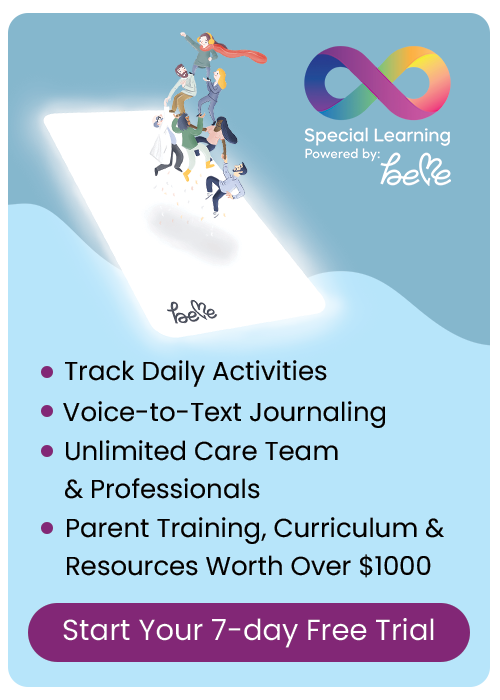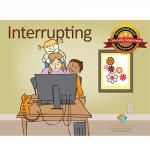Blog Categories
- ADHD
- Applied Behavior Analysis
- Autism Awareness
- Autism Service Providers
- Case Studies
- Dignosis
- Classroom Management
- Credentials
- Ethics
- Family Matters
- FAQs About LIVE Events
- Financial Planning
- Holiday Planning
- IEP's
- Panelists
- Private Equity in Autism & ABA Industry
- Psychopharmacology
- Sensory Processing Disorder
- Speech and Communication
- Subject Matter Experts
- Summer Planning
- Transition Planning
The Power of Choice
She has experience working with children, adolescents and adults in variety of settings including school, home and mental health facilities. In each of these environments, she worked closely with parents, teachers, and paraprofessionals to develop and oversee implementation of behavior intervention plans. She has extensive experience mentoring and providing supervision to RBTs, BCBA candidates and behavior analysts. As an Associate Director of Clinical Solutions for Special Learning, she is responsible for creating and presenting educational materials and promoting Special Learning’s mission to positively impact the special needs community. She received her Master’s degree in Special Education/ABA from The Ohio State University. She has been working with in the field of ABA for over ten years.
The Power of Choice
Take a minute and write down each time you have made a choice today. For me, it started with whether to choose “snooze” or to get up, what to wear, how to style my hair, etc. As you can see, you make A LOT of choices in just one day. Now try to imagine if some of those choices were made for you, like they are for many individuals with disabilities.
Allowing individuals to make choices, particularly individuals with severe developmental disabilities, can be a parsimonious, yet effective way to manage behavior. Choice interventions are increasingly the focus of experimental studies and effectively used to reduce challenging behavior and increase appropriate behavior.
According to the criterion described by Horner et al., (2005), choice interventions are considered to be an evidence-based practice for individuals with severe to profound disabilities (Tullis et al., 2011). For example, Cole and Levinson (2002) compared the effects of embedded choice questions within instructional routines to verbal directives with two students with developmental disabilities whose behaviors were typically noncompliant and aggressive. Data demonstrated that during the choice question condition, there was an overall decrease in challenging behavior.
Additionally, Carlson et al., (2008) used a choice-making intervention to eliminate public disrobing and urinating in clothing for two children with developmental disabilities in a school setting. The participants were given the choice to change into new, high preferred clothing during a scheduled period during the day. The choice-making intervention was effective at decreasing and eliminating public disrobing and urinating in clothing with both of the participants. The authors concluded the choice-making intervention functioned as an abolishing operation (i.e., decreased the participants’ motivation to disrobe and urinate).
Understanding the potential power of choice-making is beneficial for teachers and parents alike. Of course, there are some decisions that will need to be made by the caregiver, but providing more opportunities throughout one’s day can have a positive impact.
References:
Carlson, J. I., Luiselli, J. K., Slyman, A., & Markowski, A. (2008). Choice-making as an intervention for public disrobing in children with developmental disabilities. Journal of Positive Behavior Interventions, 10, 86-90.
Cole, C. L., & Levinson, T. R. (2002). Effects of within-activity choices on the challenging behavior of children with severe disabilities. Journal of Positive Behavior Interventions, 4, 29-37.
Horner, R. H., Carr. E. G., Halle, J., McGee, G., Odom, S., & Worley, M. (2005). The use of single-subject research to identify evidence-based practice in special education. Exceptional Children, 71, 165-179.
Tullis, C.A., Cannella-Malone, H.I., Basbigill, A. R., Yeager, A., Fleming, C.V., Payne, D., & Wu, P. (2011). Review of the choice and preference assessment literature for individuals with severe to profound disabilities. Education and Training in Autism and Developmental Disabilities, 46 (4), 576-595.
Additional articles related to check out:
Cannella-Malone, H. I., DeBar, R. M., & Sigafoos, J. (2009). An examination of preference for augmentative and alternative communication devices with two boys with significant intellectual disabilities. Augmentative and Alternative Communication, 25, 262-273.
LeBlanc, L. A., Cherup, S. M., Feliciano, L., & Sidener, T. M. (2006). Using choice-making opportunities to increase activity engagement in individuals with dementia. Journal of Alzheimer’s Disease and Other Dementias, 21, 318-325.
Tiger, J. H., Hanley, G. P., & Hernandez, E. (2006). An evaluation of the value of choice with preschool children. Journal of Applied Behavior Analysis, 39, 1-16.
RECOMMENDED PRODUCTS
Adolescence and Transition Bundle
Interrupting Social Story Curriculum





